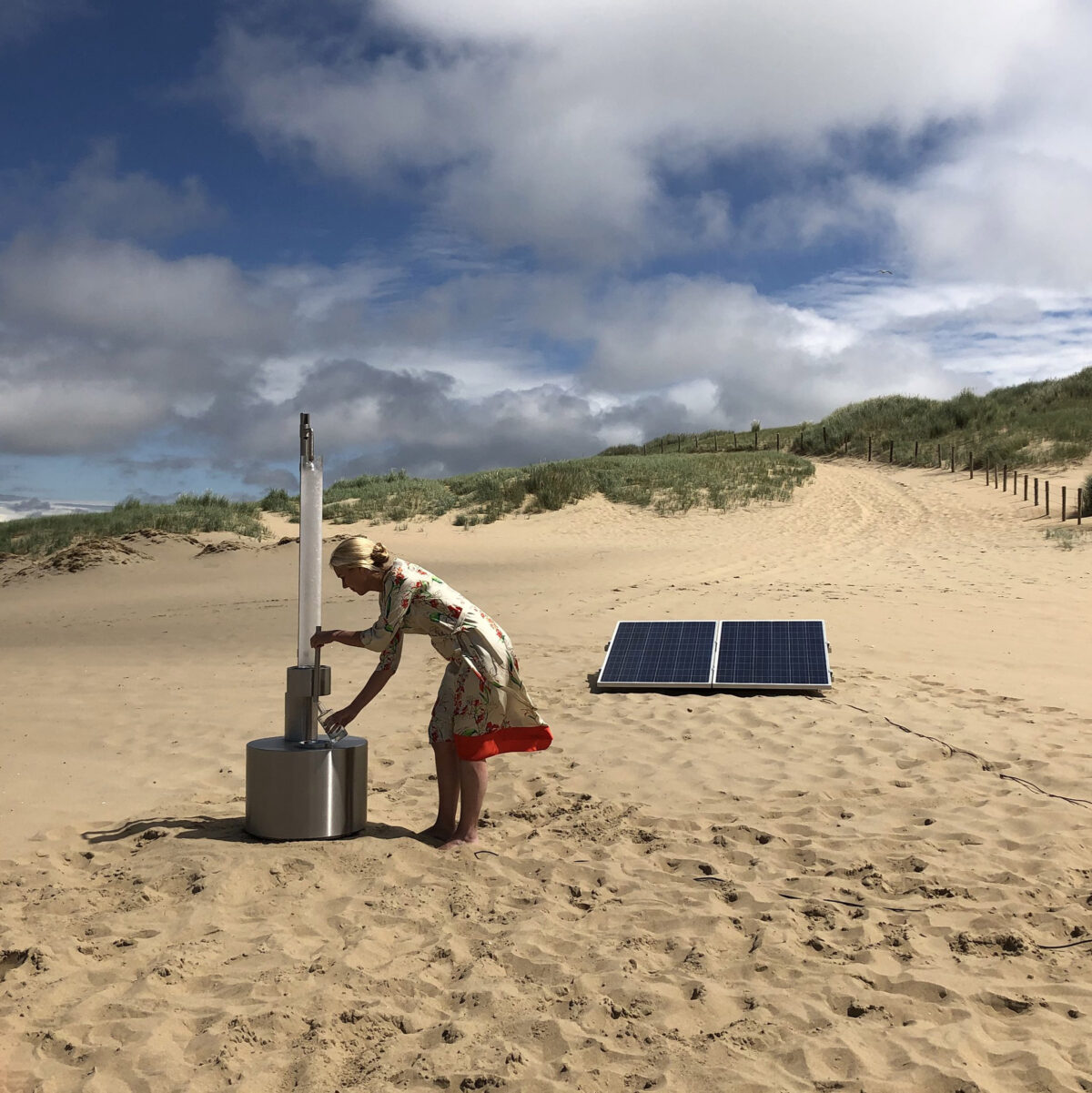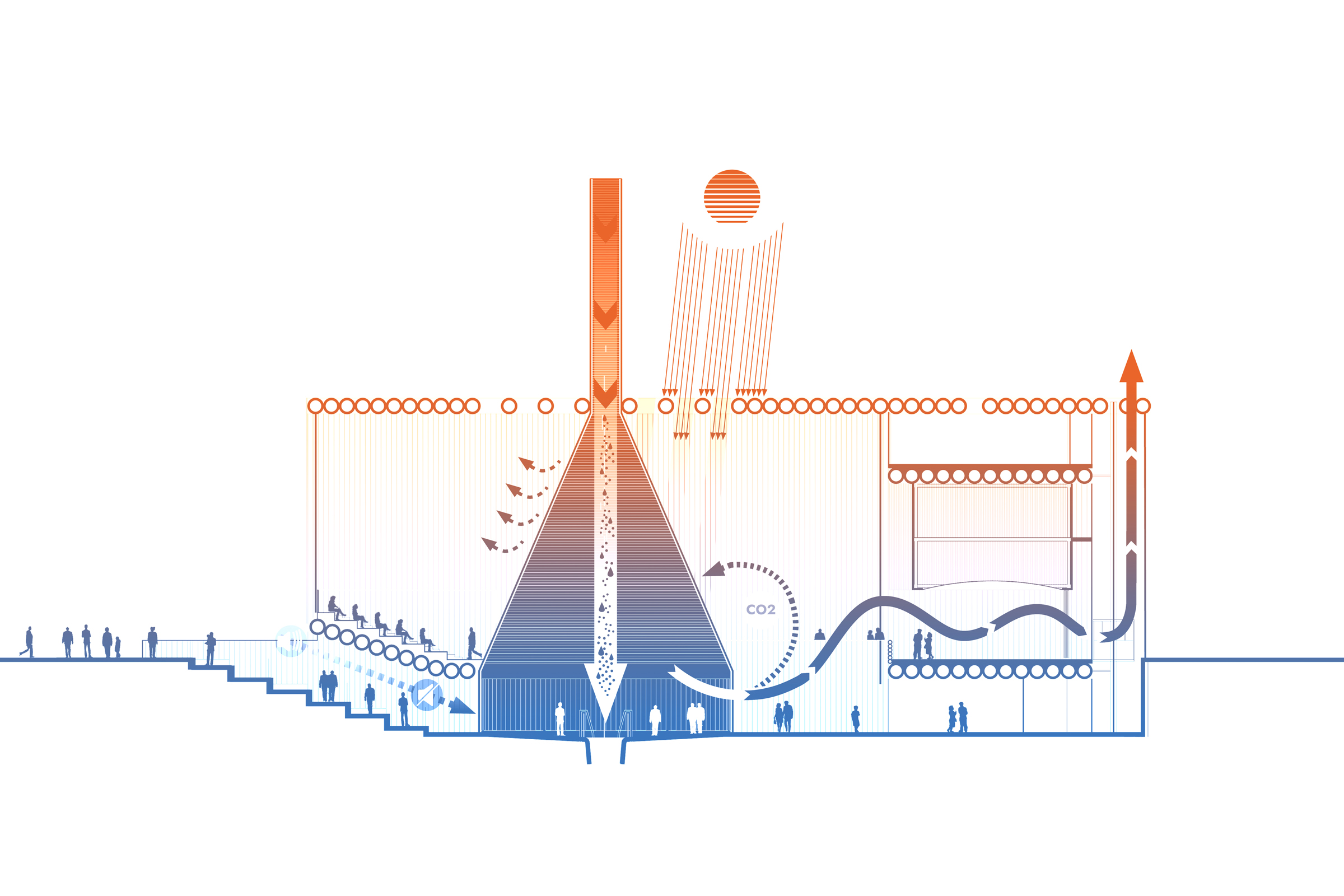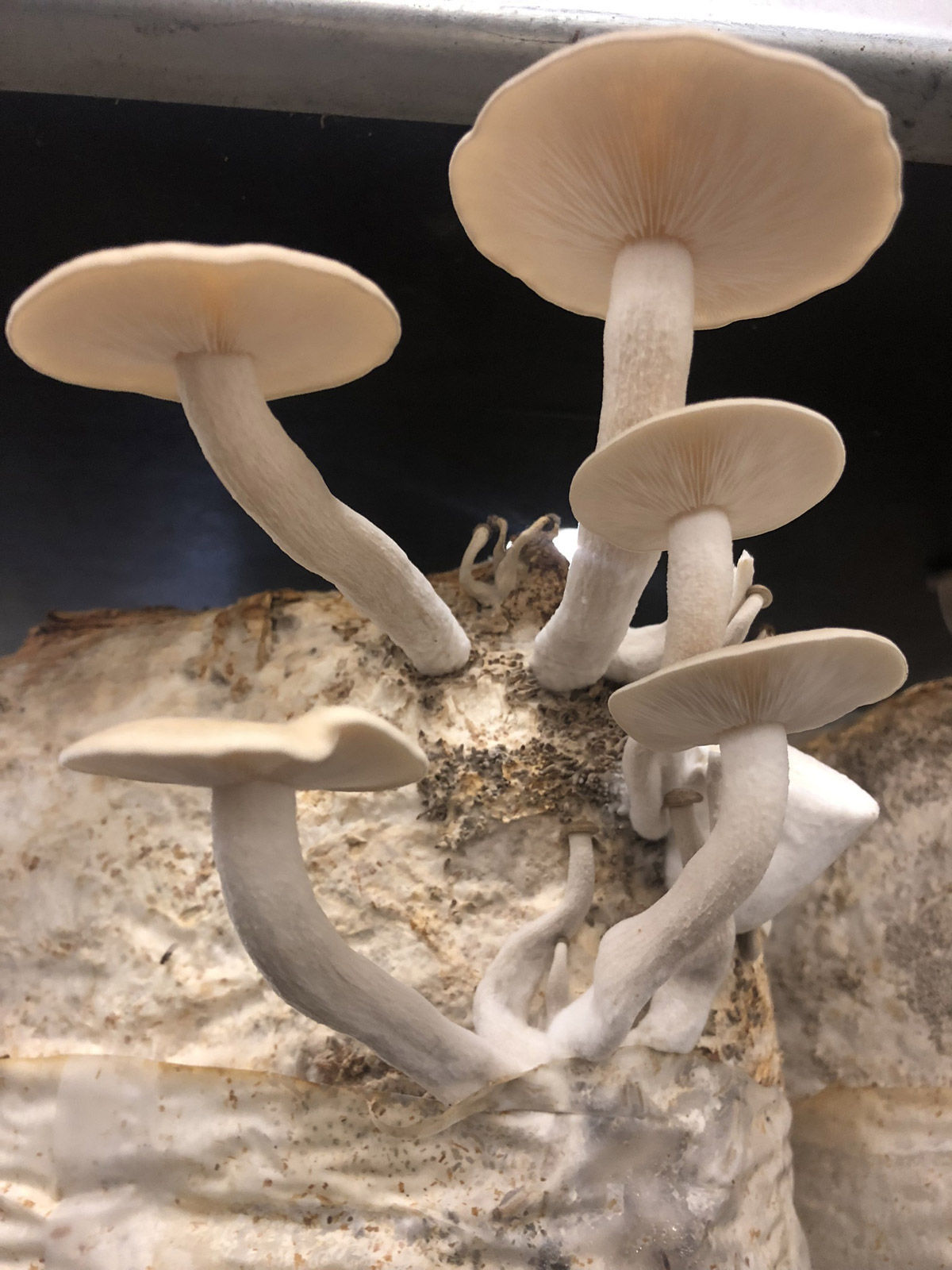


Why does it rain in the desert?
Creating a rainstorm to order in the desert. That would be nice, wouldn’t it? Here’s the good news – now it can be done. From 1 October 2021, it will be raining every day in Dubai. Not all over Dubai, but in the Netherlands pavilion at the World Exhibition. We have calculated with sufficiently certainty that we will be gathering around 1.200 litres of water from the desert air each day. But why are we doing that?
It all starts with water
The feeling of discomfort about the harrowing living conditions of far too many people on our planet and how they are forced to flee to a better life, often because of hunger, drought, and lack of perspectives, made us wonder. In these times of almost unlimited technological possibilities, how could we make it rain in the desert?
Across the world, over 1 billion people live in desert conditions, with searing heat, dry wind, and regular dusty sandstorms. The shortage of water and hence also food in these regions hits people hard. Add to this the fact that desertification is increasing which is putting more and more pressure on other regions to supply necessary raw materials.
This is why it is a pressing challenge to turn the desert into a supplying system, to make these regions green and to reduce the pressure on the rest of the word to supply. Self-sufficiency as the end goal. What is needed for this is water. This is because with water, you can grow vegetation, and change the desert into a fertile habitat.
The nexus
Time to introduce the nexus. This is the inextricable link between water, energy, and food, that creates life. The nexus cannot exist without an appropriate ecosystem, in which the interdependence of the various elements provides a circular living environment. It uses water as a source of all life. But how do you create water in the desert?
We turned our focus to the Gulf region where water is now actually being taken to the desert. This water is made from salty seawater, mainly chemicals or energy-guzzling systems. This method works, but it has a detrimental side effect for the coast. It creates a dead zone where the seawater changes composition which does not permit any form of life. This also means that endlessly scaling up this desalination system is not a sustainable solution. There was nothing to do but keep looking.
A simple principle
As often happens with contemporary issues, there are more people working on the problem of water in the desert. One of them is Ap Verheggen, an artist from The Hague, who has developed a technique to collect water from air in a very efficient manner. Since every cubic metre of air on earth contains water vapour, there is a very real chance that we will also be able to use this invention to make water in the desert.
Verheggen’s technique is based on a simple principle, but it is quite tricky to put into practice. In order to make it rain, three conditions need to be met. Firstly, there needs to be a closed system so that the collected quantity of water does not immediately evaporate. Secondly, there needs to be energy available to enable a phase change to occur. And thirdly, there needs to be a limited quantity of water available in order to start the cycle.
Let it rain!
We will set to work, full of hope and ambition. To make it rain in the Netherlands Pavilion at the World Expo in Dubai, we will first need ten litres of water as a starting quantity which we will multiply into a substantial water supply. We can collect the energy we need for this from the sun without any limits using solar panels and collectors.
Using this energy and a heat exchanger, we will cool the initial quantity of water to 4 degrees Celsius. This cooled water will be sprayed through a vertical cylinder with a shower spray head, causing the cold water to cool down the inside of the cylinder. This creates a pressure difference and a suction effect which draws warm air from the outside to the top of the cylinder. The desert air contains water vapour which condenses against the cold inner wall of the cylinder, forming water droplets.
The fascinating result is that ten times as much water flows from the bottom of the cylinder than is sprayed on the top. This condensation process happens in an enclosed environment in order to not lose any energy and none of the collected water evaporates as a result of the external conditions.
How do you create an ecosystem?
Now we are capable of creating water in an environment where we can fully profit from solar energy, to make the nexus complete we only need to grow food. But how do we do this in a way that does not place a burden on our planet and is in harmony with the surroundings? The solution lies in circular agriculture in a circular environment. For that, we will need an ecosystem.
An ecosystem is a dynamic equilibrium. It stimulates and facilitates the interaction between organisms and monitors the conditions within an enclosed environment. Circularity is an important point here – one person’s residual waste is another person’s food. It is also not a closed solution, by definition. There is a relation to the context, which means there is an influx of energy, for instance. To create an ecosystem, we need to look carefully at nature and learn from natural phenomena. By doing so, we will realise the importance of CO2, for instance.
The mushroom, the most surprising little organism
Plants use CO2 as a raw material and convert this into oxygen and growth through photosynthesis. It means that we need CO2. However, not the dirty CO2 that we emit so much of due to our gluttonous use of fossil-based raw materials. Instead, we need CO2 that is a natural part of the living system on earth. CO2 that until the industrial revolution made our planet a perfect ecosystem that was fully in balance. However, how do we find that CO2?
The solution comes from a surprising place. It is an organism, which is neither a plant nor an animal, but a fungus. A fungus that we know as the mushroom. This is an organism that produces relatively large quantity of good CO2.
In a dry and sun-drenched sandy area, you would not naturally expect to find any fungi, let alone mushrooms. You find these in cool, dark, and moist environments such as forests or grottos and basements. So, we will have to create these kinds of conditions. A cool, dark and humid area in the desert, which is something of an anomaly. We already have water, and we also have cold air as a by-product of the condensation process. If we do not let the rain shower fall in the dry desert sand, but instead in an enclosed, dark environment, it will automatically become humid and cool. This creates the perfect conditions for growing mushrooms. In this case, oyster mushrooms, a variety of mushrooms that have a low moisture content.
Those oyster mushrooms are really keen to grow, because in a noticeably short time we were harvesting 50 kg of oyster mushrooms per day. That is food. It is a healthy food that is rich in minerals, proteins and vitamins. Oyster mushrooms are also tasty, and you can even use them to make a popular Dutch snack such as bitterballen. Furthermore, these oyster mushrooms also produce more good CO2 as a by-product.
We complete the ecosystem by installing a cultivation environment for plants as a skin around this dark space. By doing so, we have in fact created a kind of greenhouse in which CO2 is captured together with sunlight. The plants in this greenhouse convert the CO2 into food and oxygen by means of photosynthesis. We irrigate the entire system using the daily yield of 1.200 litres of water. This means that all the energy that goes into the system comes from the sun, which makes perfect sense in the desert.
The result
We have now achieved what we intended, namely making a contribution to biodiversity and letting nature grow in the desert. As far as we are concerned, this is just the start of a much larger transition in which we will be able to make use of circular thinking. Vegetation provides shade and cools its surroundings. This enables water to be better retained, which creates other living conditions. Dead plants are composted and once again provide food for other organisms. When we give nature time and deploy smart techniques, we can give nature a helping hand so that nature and human ingenuity go hand in hand in the post-industrial era. That should be the contribution of our generation and future generations to this planet.
Author: Michiel Raaphorst
